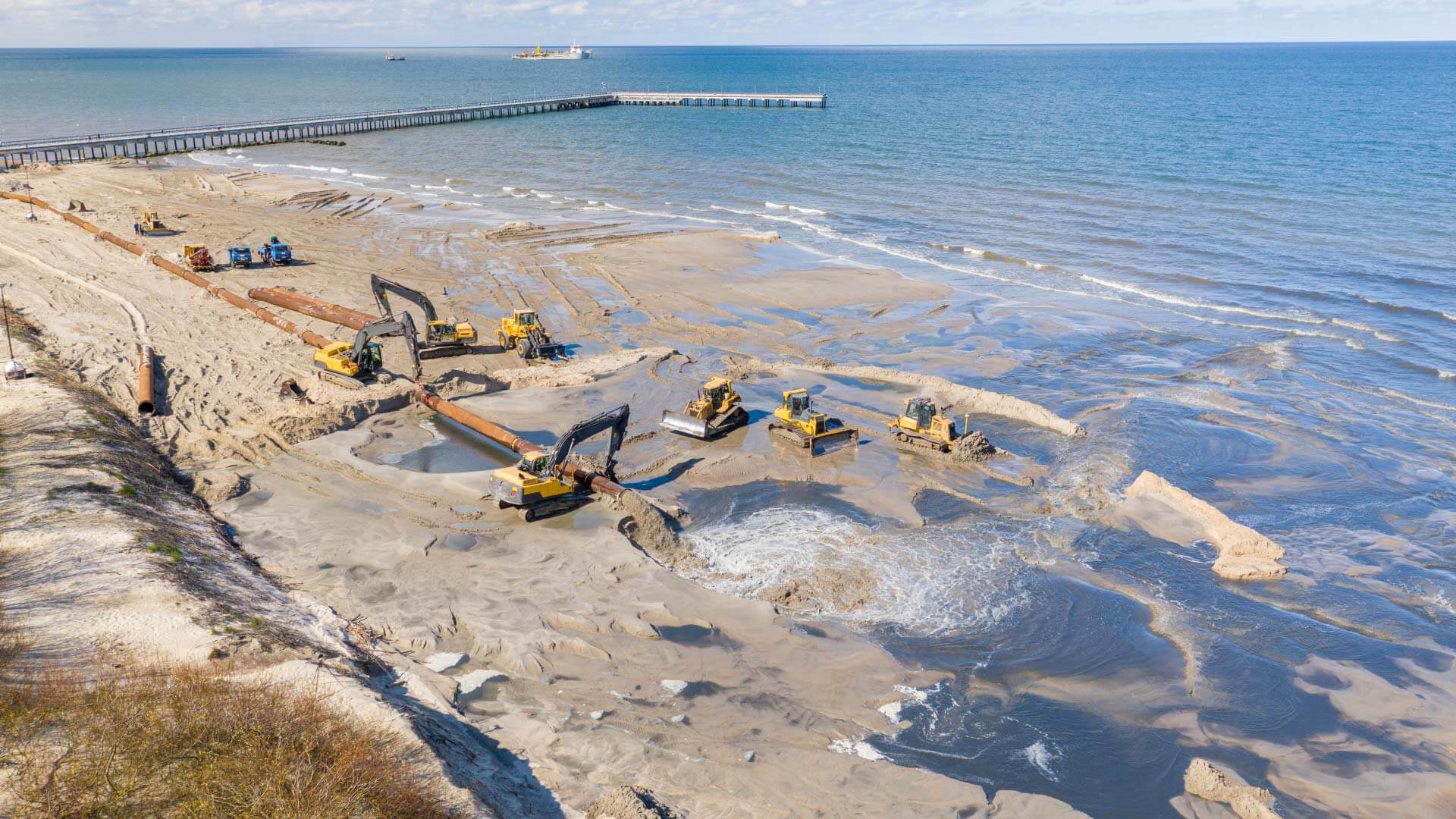What is Beach Restoration, and Why is it Important?
Beach restoration is the process of replenishing and stabilizing eroded shorelines to protect coastal ecosystems, infrastructure, and communities. As one of the most effective strategies for mitigating shoreline erosion, beach restoration helps maintain natural habitats, preserves recreational areas, and safeguards properties from storm surges and rising sea levels.
Maintaining healthy beaches is essential for coastal communities’ tourism, local economies, and environmental sustainability. Without proper restoration efforts, unchecked erosion can lead to property damage, loss of natural habitats, and increased vulnerability to extreme weather events. By utilizing a professional beach restoration service, communities can implement long-term solutions that enhance shoreline resilience and restore natural coastal dynamics.
Causes of Beach Erosion
Beaches are dynamic landscapes that constantly change due to natural and human-induced forces. Understanding the causes of erosion is crucial in developing effective beach restoration strategies.
Natural Causes of Beach Erosion
- Wave Action and Currents: The constant movement of ocean waves and tides gradually pulls sand away from the shoreline, reshaping the coast over time.
- Storm Surges and Extreme Weather: Hurricanes, tropical storms, and high-energy wave events can cause rapid and severe beach erosion, washing away large amounts of sediment.
- Rising Sea Levels: As global temperatures rise, melting ice caps contribute to rising sea levels, which in turn lead to increased coastal flooding and erosion.
- Wind and Rain: Strong winds and heavy rainfall can erode dunes and wash away beach sand, reducing the natural buffer against wave energy.
Human-Induced Causes of Beach Erosion
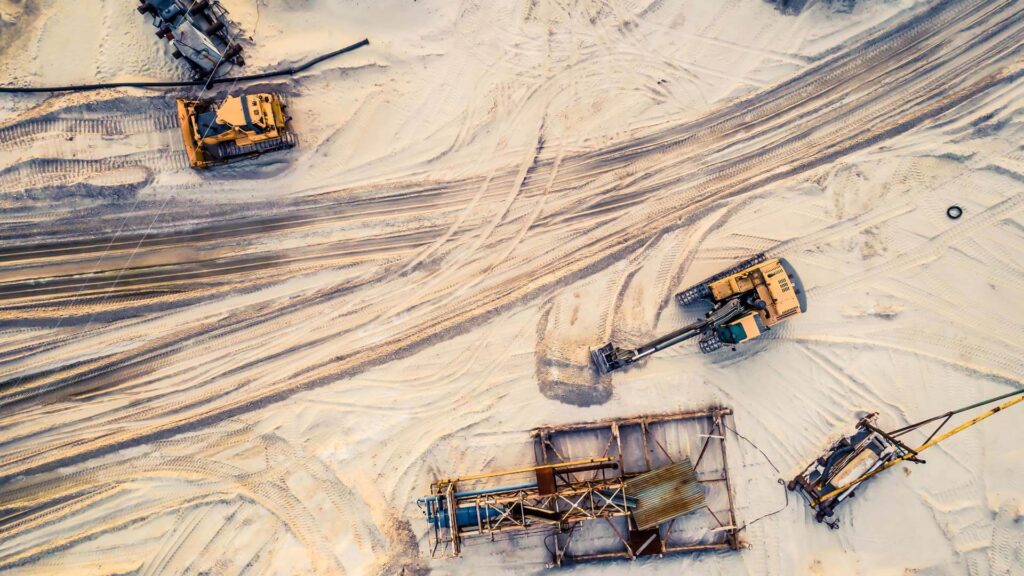
- Coastal Development: Construction of seawalls, roads, and buildings near shorelines disrupts natural sand movement and accelerates erosion.
- Dredging and Navigation Channels: Removing sediment from river mouths and coastal areas can alter natural sediment flow, depleting beaches of their natural sand supply.
- Sand Mining: The extraction of sand for construction and industrial use can deplete coastal reserves, making beaches more vulnerable to erosion.
- Infrastructure Interference: Jetties, groins, and other structures designed to control water flow can unintentionally trap sand in some areas while starving others, leading to unbalanced erosion.
To combat erosion and preserve coastal stability, beach restoration services focus on two primary strategies:
- Erosion Control: Implementing techniques such as dune stabilization, living shorelines, and structural reinforcements to reduce sand loss and protect coastal areas.
- Sand Replenishment: Replacing lost sediment through beach nourishment, dredging, and offshore sand deposits to restore beach width and maintain natural coastal dynamics.
If you are looking for beach restoration near me, you must choose a professional service that understands local coastal conditions and implements sustainable restoration solutions. Whether it’s a small-scale replenishment project or a large-scale erosion control initiative, beach restoration services play a vital role in preserving shorelines and protecting communities from the ongoing threat of erosion.
Understanding Coastal Erosion: Causes and Impact
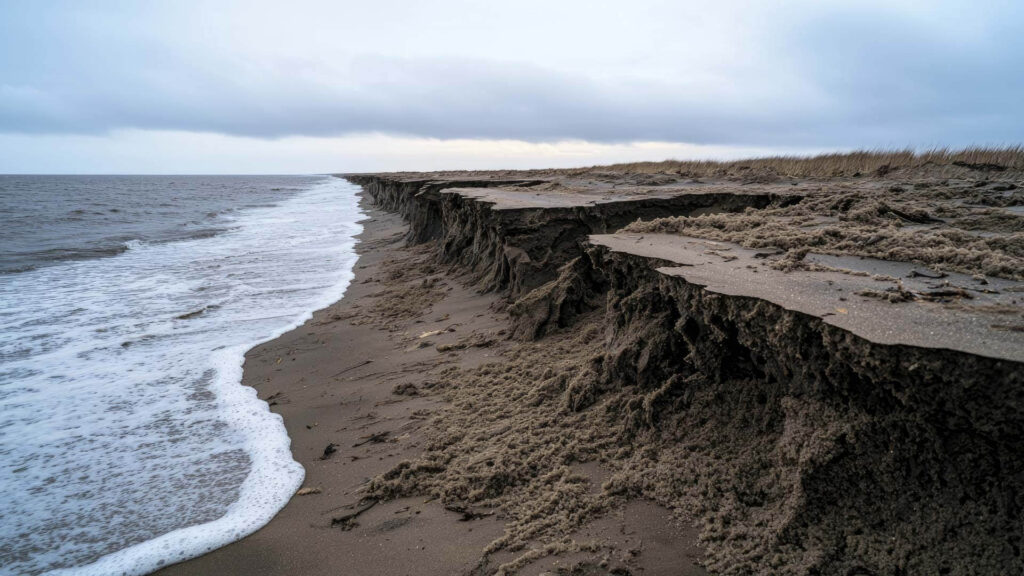
Natural Causes of Erosion
Coastal erosion is a natural process that continuously reshapes shorelines, often requiring intervention through beach restoration to maintain stability. Several natural forces contribute to this process, accelerating sand loss and altering beach structures.
- Wave Action and Tidal Currents
Ocean waves and tidal currents constantly move sand along the coast, gradually eroding some areas while depositing sediment in others. Over time, this natural cycle can lead to significant shoreline retreats, making beach restoration services essential for maintaining beach width and stability.
- Storm Surges and Hurricanes
Extreme weather events, such as hurricanes and tropical storms, can cause rapid and severe erosion. Storm surges push massive amounts of water inland, washing away sand, damaging dunes, and destabilizing coastal ecosystems. Without proper mitigation, the aftermath of a major storm can leave communities searching for beach restoration near me to rebuild their shorelines.
- Sea Level Rise and Climate Change
Rising global temperatures contribute to melting ice caps, increasing sea levels, and amplifying coastal erosion. As water levels rise, waves reach further inland, eroding beaches at an accelerated rate. Climate change also intensifies storm activity, making proactive beach restoration efforts more critical than ever.
Human-Induced Causes of Erosion
While natural forces contribute to coastal changes, human activities have significantly disrupted sediment flow and increased erosion rates, necessitating intervention through beach restoration services.
- Coastal Development and Infrastructure
The construction of roads, buildings, and seawalls along the coast can disrupt the natural movement of sand, increasing erosion in some areas and causing sediment buildup in others. Hard structures, such as bulkheads and jetties, often accelerate erosion on adjacent shorelines, making long-term beach restoration strategies necessary.
- Dredging and Navigation Channel Modifications
Coastal waterways and harbors require frequent dredging to maintain navigability. However, this process removes sediment that would naturally replenish nearby beaches, creating an artificial sand deficit. As a result, communities must invest in beach restoration services to replace lost sediment and stabilize their shorelines.
- Sand Mining and Depletion of Natural Sediment Supply
Sand extraction for construction and industrial purposes disrupts the natural replenishment of beaches. When coastal sand reserves are depleted, erosion accelerates, increasing the demand for beach restoration near solutions to mitigate the damage.
Effects of Erosion on Beaches and Coastal Communities
Unchecked erosion has severe consequences for coastal environments and economies, highlighting the need for proactive beach restoration efforts.
- Loss of Habitat for Marine and Coastal Wildlife
Beaches and dunes provide critical habitats for shorebirds, sea turtles, and other coastal species. Erosion can destroy nesting areas, disrupt food sources, and threaten biodiversity, making habitat restoration an essential component of beach restoration services.
- Increased Flooding and Property Damage
As beaches shrink due to erosion, coastal properties become more vulnerable to flooding and storm damage. Without intervention, communities face higher repair costs and safety risks, prompting many to seek beach restoration near me to protect their homes and infrastructure.
- Economic Impact on Tourism and Local Industries
Many coastal communities rely on tourism-driven economies, and healthy beaches attract visitors, businesses, and recreational activities. However, severe erosion can diminish beach accessibility, reduce property values, and harm local businesses, making beach restoration a priority for economic sustainability.
Key Techniques for Erosion Control in Beach Restoration
Erosion control is a critical component of beach restoration, ensuring the long-term stability of shorelines and protecting coastal communities. To combat sand loss and prevent further degradation, engineers and environmental experts implement a combination of hard engineering and soft engineering solutions. Each approach offers unique advantages, and choosing the right method depends on site-specific conditions, environmental impact, and long-term sustainability.
Hard Engineering Solutions
Hard engineering techniques involve building artificial structures to protect shorelines from wave action and erosion. While effective in some cases, these methods can also have unintended consequences, such as increased erosion in adjacent areas.
- Seawalls and Bulkheads
Seawalls and bulkheads are vertical structures built along the shoreline to absorb wave energy and protect coastal properties from storm surges and erosion. While they provide immediate defense against rising water levels, these structures can intensify erosion at their base and disrupt natural sediment movement. Coastal communities relying on these measures often require additional beach restoration services to counteract unintended shoreline changes.
- Groins and Jetties
Groins and jetties are long, narrow structures built perpendicular to the shoreline to trap sand and reduce erosion. Groins are commonly used on beaches experiencing longshore drift, while jetties are placed at harbor entrances to prevent sediment buildup. Although these structures can help maintain beach width, they may cause downdrift erosion, requiring ongoing beach restoration near efforts to redistribute sediment.
- Breakwaters
Breakwaters are offshore barriers designed to reduce wave energy before it reaches the shore. These structures can help stabilize beaches by creating calmer waters and allowing sediment to accumulate naturally. However, improper placement can disrupt local ecosystems and alter coastal hydrodynamics, making professional beach restoration services essential for proper implementation.
Soft Engineering Solutions
Soft engineering focuses on environmentally friendly, sustainable methods for restoring and stabilizing beaches. These techniques work with natural processes rather than against them, reducing long-term environmental impact while improving shoreline resilience.
- Beach Nourishment
One of the most widely used beach restoration methods is beach nourishment, which involves adding sand to replenish eroded shorelines. This technique helps maintain beach width, protect coastal properties, and enhance recreational areas. Regular sand replenishment is necessary in areas with high erosion rates, making it a key service for communities searching for beach restoration near me.
- Dune Restoration
Coastal dunes serve as natural barriers against storms and high tides, helping to prevent inland flooding and erosion. Dune restoration efforts include planting native vegetation, installing sand fences, and reinforcing dune structures to stabilize the shoreline. Communities implementing this approach often work with beach restoration services to enhance dune resilience and protect against future erosion.
- Living Shorelines
Living shorelines incorporate natural materials such as oyster reefs, marsh plants, and sediment barriers to protect beaches from erosion while supporting marine habitats. Unlike traditional hard structures, these solutions promote ecological balance and long-term sustainability. This innovative approach to beach restoration is gaining popularity among coastal communities seeking environmentally friendly erosion control solutions.
Beach restoration services can integrate hard and soft engineering solutions to provide comprehensive strategies to combat erosion and preserve coastal landscapes. The choice of techniques depends on each beach’s specific challenges, emphasizing the importance of professional evaluation and tailored beach restoration near-me solutions.
Sand Replenishment: Restoring Beaches with Natural Sediment
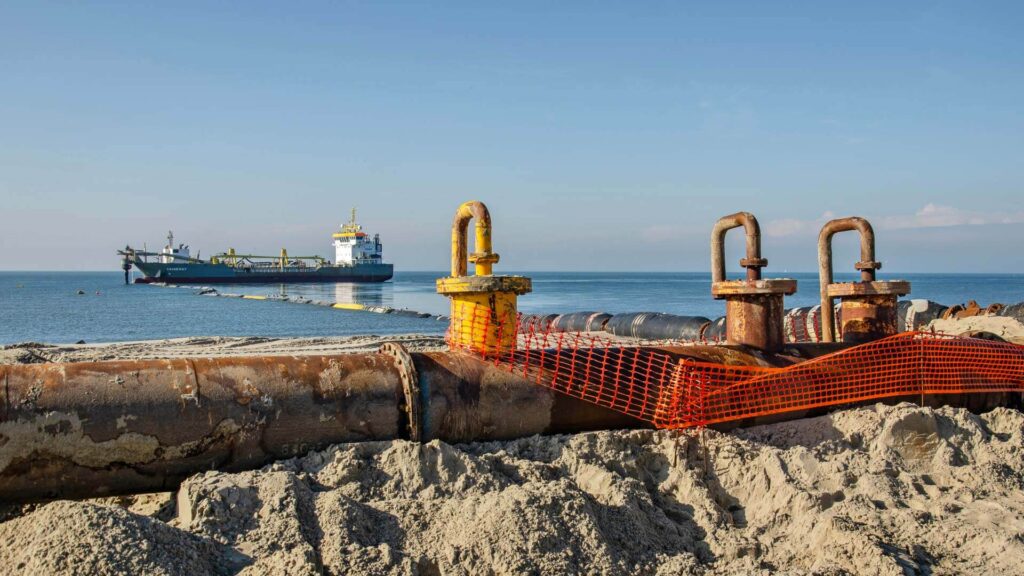
Sand replenishment, also known as beach nourishment, is a fundamental aspect of beach restoration that involves replacing lost sediment to maintain beach stability and protect coastal areas from erosion. By restoring natural sand levels, this process helps sustain recreational beaches, safeguard marine habitats, and reinforce shorelines against storm surges and rising sea levels. Communities searching for beach restoration near me often rely on professional beach restoration services to determine the best replenishment strategies for their local conditions.
Sources of Replenishment Sand
Sourcing sand for beach restoration requires careful selection to ensure compatibility with the native beach environment. The right sediment must match the grain size, color, and composition of the existing sand to prevent ecological disruption and maintain natural coastal processes. The most common sources of replenishment sand include:
- Offshore Dredging and Sand Deposits
Offshore sand deposits are a primary source for large-scale beach restoration projects. Using hydraulic dredging, sand is extracted from the seafloor and transported to eroded shorelines. This method is effective for maintaining wide beaches but requires environmental assessments to minimize impacts on marine ecosystems.
- Inland Sources and Recycled Sediments
Some beach restoration services use sand from quarries, riverbeds, or construction projects. Recycled sediments, such as those from dredged harbors or reservoirs, can be repurposed for beach nourishment if they meet environmental and compatibility standards.
- Sediment Bypassing from Coastal Structures
Artificial structures like jetties and breakwaters can trap sediment, disrupting natural sand movement. Sediment bypassing is a technique that transfers trapped sand to downdrift beaches, ensuring a balanced sediment distribution. This process is commonly used in areas where human-made coastal modifications worsen erosion.
Methods of Sand Placement
Once the replenishment sand is sourced, it must be transported to the eroded beach. The method of placement depends on the size of the project, the level of erosion, and environmental considerations.
- Hydraulic Dredging and Pumping Sand onto Beaches
One of the most efficient methods for large-scale beach restoration is hydraulic dredging, This method involves suctioning sand from offshore sites and pumping it directly onto the beach. The sand is then spread and graded to restore natural contours. This method is commonly used for barrier islands, resort beaches, and heavily eroded shorelines.
- Truck-Hauling Sand for Smaller-Scale Projects
Truck-hauling is a practical solution for localized beach restoration near me. Sand is transported from inland quarries or nearby dredging sites and deposited along the beach. While this method is more labor-intensive, it is often used for emergency replenishment or small community projects.
- Nearshore Berm Construction to Allow Gradual Sand Deposition
Instead of directly placing sand on the beach, some projects involve constructing underwater sand berms just offshore. Over time, natural wave action moves the sand onto the beach, mimicking natural sediment transport. This technique minimizes environmental disturbance and provides a more gradual, sustainable approach to beach restoration.
Challenges and Considerations
While sand replenishment is a vital component of beach restoration, it presents several challenges that must be carefully managed to ensure long-term success.
- Environmental Impact Assessments and Permitting
Extracting and placing large amounts of sand can disrupt marine habitats and alter coastal ecosystems. Environmental assessments are required to evaluate potential impacts on local wildlife, water quality, and sediment transport. Obtaining permits from regulatory agencies is a crucial step in responsible beach restoration services.
- Cost and Sustainability of Long-Term Replenishment
Beach nourishment is an ongoing process, as replenished sand gradually erodes over time. The cost of sourcing, transporting, and placing sand can be significant, making it essential to balance economic feasibility with long-term shoreline protection. Communities searching for beach restoration near me should consider sustainable funding sources and long-term management plans.
- Selecting Compatible Sand to Match Native Beach Conditions
Using sand that differs from the native beach composition can lead to negative consequences, including rapid erosion, compaction, and habitat disruption. Proper analysis of grain size, mineral content, and sediment behavior ensures that replenishment efforts effectively restore beach stability.
Addressing these challenges, beach restoration services can implement effective, environmentally responsible sand replenishment strategies, helping coastal communities maintain healthy and resilient shorelines.
The Role of Beach Restoration Services
Professional beach restoration services play a critical role in protecting and revitalizing eroded coastlines. Whether addressing storm damage, mitigating ongoing erosion, or enhancing recreational beach areas, restoration experts provide the expertise and equipment needed to implement sustainable shoreline solutions. Choosing the right beach restoration service ensures that restoration efforts are effective, environmentally responsible, and long-lasting.
What to Look for in a Professional Beach Restoration Service
When searching for a qualified beach restoration service, it’s essential to evaluate their experience, methodologies, and resources. Here are key factors to consider:
- Experience with Coastal Engineering and Environmental Compliance
A reputable beach restoration service should have extensive experience in coastal engineering, sediment management, and erosion control. Look for firms that understand regional coastal dynamics and adhere to environmental regulations to minimize ecological impact. Permitting and compliance with local, state, and federal guidelines are essential for any restoration project.
- Use of Sustainable and Effective Erosion Control Techniques
The best beach restoration services prioritize sustainable solutions that align with natural coastal processes. This includes using a combination of soft engineering methods, such as dune restoration and beach nourishment, and necessary hard engineering structures, such as breakwaters and groins, to control sediment movement effectively.
- Access to High-Quality Sand Sources and Advanced Dredging Equipment
The quality of sand used for beach restoration significantly impacts the longevity and success of the project. A professional restoration service should have access to compatible sediment sources and advanced dredging equipment to ensure proper sand placement. Hydraulic dredging, nearshore sand relocation, and sediment bypassing are commonly used techniques to replenish beaches efficiently.
How to Find a Beach Restoration Service Near Me
For communities facing coastal erosion, finding a reliable beach restoration service near me is essential for maintaining a stable shoreline. Here’s how to locate the best professionals for the job:
- Researching Local Coastal Restoration Firms and Government Projects
Start by identifying beach restoration firms that specialize in erosion control and shoreline stabilization in your area. Many government agencies oversee coastal restoration projects and offer resources and guidance to approved contractors. Checking municipal websites and environmental organizations can provide insights into active restoration initiatives.
- Consulting Environmental Agencies and Community Organizations
Local environmental agencies and non-profit coastal conservation groups often work closely with beach restoration services to implement sustainable shoreline management plans. Reaching out to these organizations can help you find restoration experts with a track record of successful projects in your region.
- Evaluating Previous Projects and Client Testimonials
Reviewing past restoration projects and client feedback is crucial in selecting the right beach restoration service. Look for case studies, before-and-after photos, and customer testimonials that demonstrate the company’s ability to restore and maintain beaches effectively. Companies with positive reviews and proven results are more likely to deliver high-quality restoration services.
By partnering with experienced beach restoration services, coastal communities can implement effective solutions to combat erosion, protect valuable shorelines, and ensure long-term sustainability.
The Future of Beach Restoration
As climate change accelerates coastal erosion and extreme weather events become more frequent, the demand for innovative beach restoration solutions continues to grow. Future approaches to shoreline protection focus on sustainable, eco-friendly methods that not only restore beaches but also enhance natural coastal resilience. From advanced stabilization techniques to climate adaptation strategies, the next generation of beach restoration services is shaping a more sustainable future for coastal communities.
Innovations in Coastal Protection
Modern beach restoration efforts incorporate cutting-edge technologies and nature-based solutions to improve shoreline stability while minimizing environmental impact.
- Advances in Eco-Friendly Shoreline Stabilization
Traditional hard-engineering methods like seawalls and bulkheads have often led to unintended erosion and habitat loss. In contrast, emerging eco-friendly stabilization techniques prioritize working with natural processes. These include living shorelines, which use native vegetation, oyster reefs, and sediment traps to buffer against wave action and enhance dune formation. Many beach restoration services are now integrating these sustainable methods to create long-term solutions that promote biodiversity and natural sediment retention.
- Integration of Artificial Reefs and Offshore Wave Attenuation Devices
Artificial reefs and offshore wave attenuation structures are being increasingly used in beach restoration to reduce wave energy before it reaches the shore. By absorbing and dissipating wave force, these structures help protect beaches from erosion while providing habitats for marine life. Some beach restoration services incorporate modular reef systems made from biodegradable materials, promoting both erosion control and marine ecosystem restoration.
The Role of Climate Adaptation in Beach Restoration
As rising sea levels and intensifying storms continue to threaten coastal communities, beach restoration is becoming a crucial component of climate adaptation strategies.
- Rising Sea Levels and Increasing Storm Frequency
Due to climate change, global sea levels are rising at an accelerating rate, leading to more frequent and severe coastal flooding. Stronger storms and hurricanes also cause rapid beach erosion, washing away sediment and endangering infrastructure. Beach restoration near me is becoming a key concern for coastal communities looking to mitigate these effects and maintain a stable shoreline.
- Adaptive Management Strategies for Long-Term Beach Preservation
To ensure the long-term success of beach restoration, adaptive management strategies are being implemented to monitor and adjust restoration efforts in response to changing coastal conditions. These strategies include real-time shoreline monitoring, predictive modeling for erosion trends, and integrating flexible approaches such as periodic sand replenishment and dune reinforcement. Leading beach restoration services are leveraging data-driven decision-making and sustainable engineering practices to build more resilient coastlines.
As climate challenges grow, the future of beach restoration will depend on innovative, environmentally responsible approaches that protect shorelines while preserving natural ecosystems. By embracing advanced coastal protection techniques and adaptive restoration strategies, coastal communities can better prepare for the evolving threats posed by climate change.
Conclusion
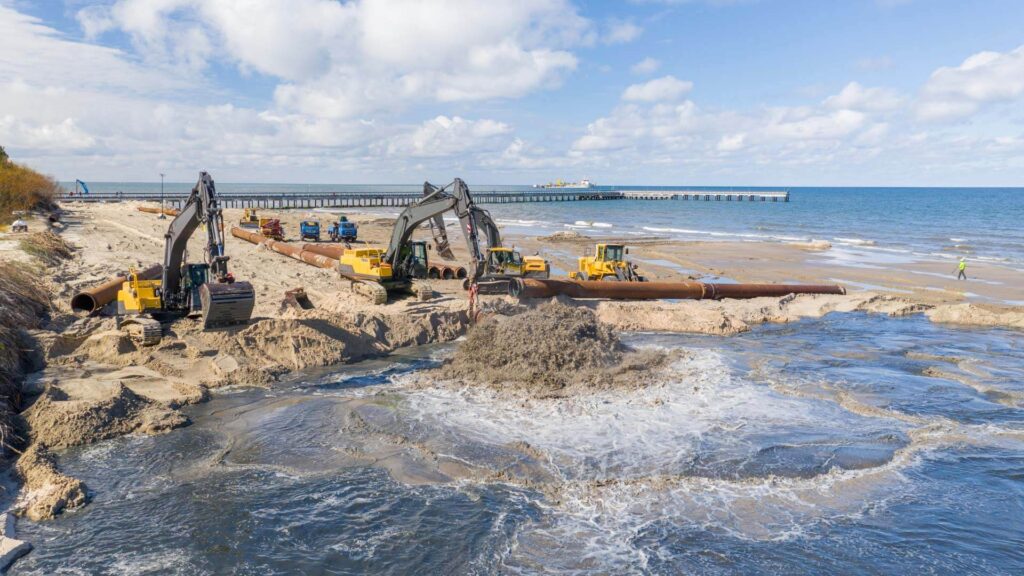
Beach restoration is a vital solution for combating coastal erosion, protecting marine ecosystems, and preserving the economic and recreational value of shorelines. By combining erosion control techniques, sand replenishment, and innovative coastal protection strategies, beach restoration services play a crucial role in maintaining stable and resilient coastlines. As natural forces and human activities continue to shape coastal environments, proactive restoration efforts are necessary to ensure the long-term sustainability of beaches and the communities that rely on them.
As climate change accelerates rising sea levels and intensifies storm activity, the future of beach restoration will depend on sustainable, data-driven solutions that balance environmental conservation with shoreline protection. Whether through eco-friendly shoreline stabilization, artificial reefs, or adaptive management strategies, investing in beach restoration near me is essential for safeguarding coastal regions from ongoing erosion. By working with experienced professionals and embracing innovative restoration methods, communities can build stronger, more resilient coastlines that withstand environmental challenges for generations to come.

